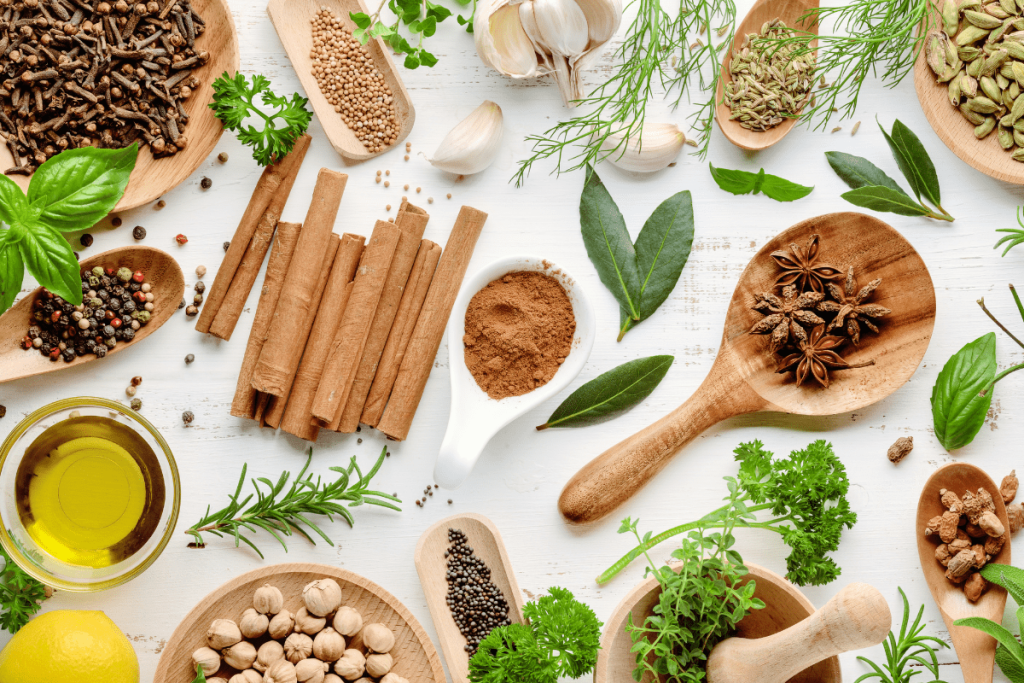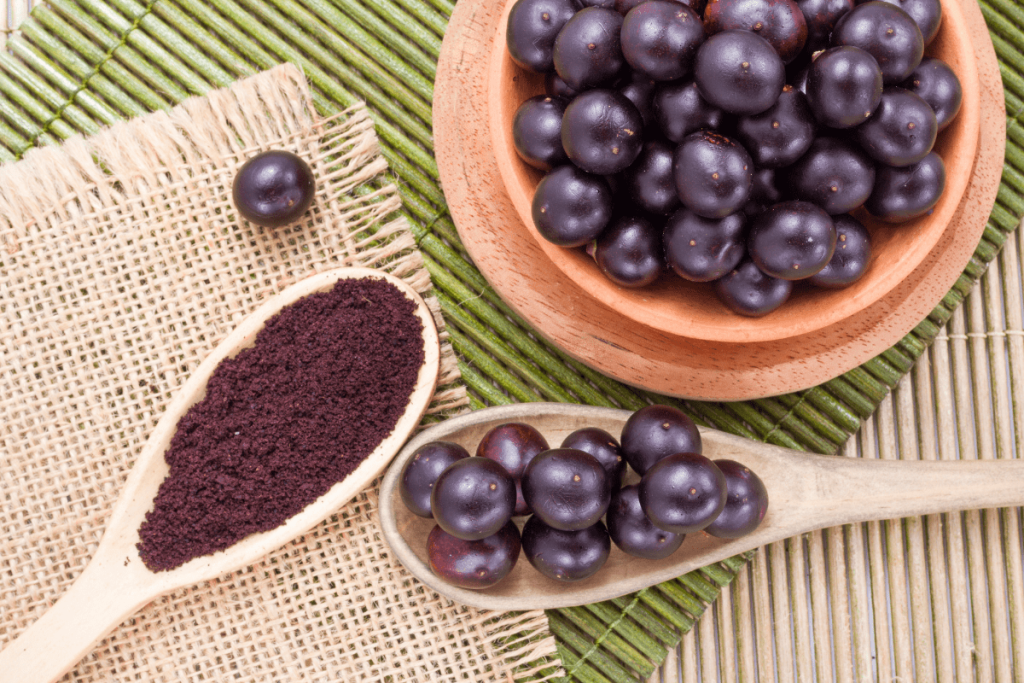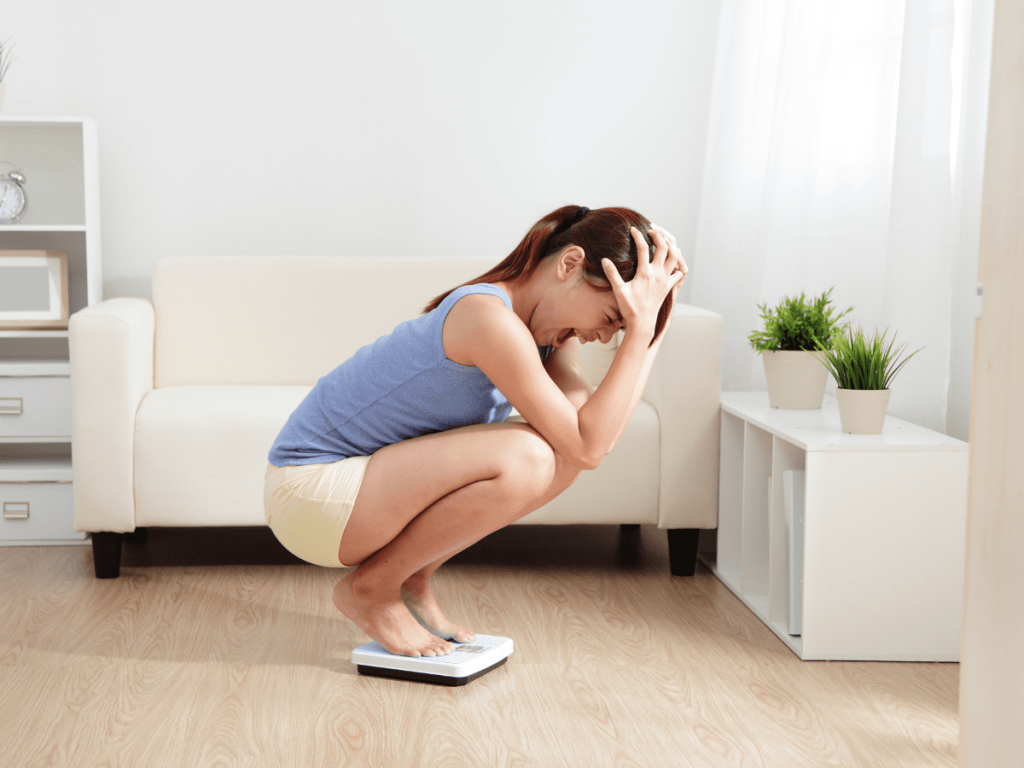Why Can’t I Lose Weight?

Weight gain and weight loss resistance are very common symptoms among people with chronic health disorders. Contrary to popular belief, an inability to lose weight or keep it off is not a sign of a character flaw but instead flaws in your metabolic, immune, or neurological health. In our culture, fat shaming, unfortunately, finds acceptance, especially in alternative health circles and when directed toward women. However, it’s important to recognize that individuals who are overweight or obese may actually follow some of the healthiest diets and lifestyle practices you’ll come across. Their commitment to maintaining their weight necessitates mindful eating choices, as straying from a balanced routine could lead to rapid weight gain. Instead of beating yourself up if you can’t lose the weight or experiencing unexplained weight gain, it’s worth considering if any of the following underlying causes could be influencing your situation. Here are nine potential reasons why weight loss may be challenging, and none of them have anything to do with laziness or lack of discipline: Nine potential reasons why weight loss may be challenging 1) You are a veteran lifelong dieter. The multi-billion-dollar diet industry coupled with unrealistic cultural body image standards have turned low-calorie dieting into a way of life. That works great in your youth, but as you age your metabolism fatigues from constant famines. The human body responds to famines by progressively lowering metabolism and increasing fat storage hormones. As a result, each low-calorie diet can make you a little bit fatter than the last one once you resume normal caloric intake. This explains why diets have such low long-term success. This phenomenon was most poignantly illustrated in a study of participants from the The Biggest Loser reality TV show. Six years after participating in the show, researchers found they were burning 800 fewer calories per day and the majority of them returned to their pre-show weight and had to under eat by 400-800 calories a day just to not gain weight. 2) Your hunger hormones are out of whack. Conversely, if you routinely eat ample sugar and desserts and processed carbohydrates (breads, pastas, white rice, etc.), you likely have leptin resistance and skewed hunger hormone function that causes constant food cravings and hunger. Minimizing or eliminating processed carbohydrates and exercising regularly helps improve leptin sensitivity so your hunger cues and fat burning returns to normal. 3) Your thyroid isn’t working well. One of the most common causes of weight gain and weight loss resistance is hypothyroidism, or low thyroid activity. And the most common cause of this is Hashimoto’s, an autoimmune disease that attacks and damages the thyroid gland. This is why many people do not lose weight even after they start taking thyroid medication. It’s essential to address the underlying causes of Hashimoto’s hypothyroidism to improve your health and lose weight. 4) You are chronically inflamed. Chronic inflammation skews hormone function, metabolism, and gut health in a way that can promote fat storage and prevent fat burning. Many people enjoy easy weight loss by following an anti-inflammatory diet and lifestyle. Nutrient-dense foods void of inflammatory triggers also manage pain, gut problems, autoimmune diseases, high blood pressure, depression, anxiety, and other health issues. 5) You’ve had a brain injury or have compromised brain function Many sufferers of concussions and brain injuries find they suddenly gain weight after their injury and are not able to lose it. Brain injuries cause inflammation in the brain, which can not only impact brain function, but also disrupt metabolic, hormone, and immune in a way that promotes weight gain and inhibits fat burning. Brain injury victims also often struggle with fatigue, exercise intolerance, depression, and other symptoms interfering with appropriate fat burning and storage. 6) You have mold illness. Mold illness is increasingly being identified as an underlying cause of many health disorders and symptoms, including weight gain and weight loss resistance. Almost a quarter of the US population is susceptible to mold illness. Toxicity from mycotoxins, the byproducts of molds, can seriously impact metabolic, immune, and neurological health leading to unexplained weight gain and weight loss resistance. This refers not just to the dreaded black mold but also the more commonly found strains of mold caused by leaks and water damage in buildings. 7) You were born with an obese gut microbiome. Research into the gut microbiome, our trillions of gut bacteria, show they impact virtually every aspect of our health, including whether we are more likely to be thin or heavy. Studies on both mice and humans have shown that obese subjects inoculated with the gut bacteria of thin subjects went on to quickly and easily lose weight. Factors that impact your gut microbiome “signature” in a way that promotes obesity include being delivered via C-section, being formula fed versus breastfed, and frequent antibiotic use in childhood. 8) You are a victim of childhood sexual abuse or sexual assault or have PTSD. After more than two decades of trying to understand why most obese people regained the weight they lost, an obesity researcher made an accidental discovery the majority of his study subjects had been sexually abused as children or sexually assaulted right before the time their weight gain began. This can drive complex PTSD and the genesis of food addiction to cope. Likewise, researchers have found a correlation between food addiction and PTSD in women. 9) You have a brain-based disorder that promotes food addiction and an eating disorder. For many people with weight issues, food becomes the source of torturous addictive behaviors that can then morph into eating disorders. It is increasingly being found that addictions and eating disorders are linked to brain-based disorders such as ADHD. The skewed neurological function triggers the obsessive thought patterns that lay the foundation for addictive eating and eating disorders. Look for the underlying cause of weight gain and weight loss resistance to develop self-compassion.
Transforming Your Body with a Body Composition Machine

Have you ever stepped on the scale and gained three pounds and not know why? Or weigh the same but had trouble zipping up your jeans? Chasing a number on the scale can be a lesson in frustration, this is why knowing your body composition and what you are made up of can be an invaluable tool that can put you back in charge of your health and weight loss goals. Unlock Your Body’s Potential By Using a Body Composition Machine If you are looking to get into shape and reach your fitness goals, the information from a body composition machine is the key and will help take your nutrition and workout regimes to the next level. Knowing your body composition can be incredibly valuable when it comes to creating an effective and personalized fitness routine and diet plan. With the help of a body composition machine, you can get a detailed analysis of your body’s structure and composition. In this article, we will look at why knowing your body composition is critical and how a body composition machine will help you transform your body for good. What is a Body Composition Machine? When it comes to our health, knowledge is power. That’s why you should understand exactly what a body composition machine can do and how it works. A body composition machine is an incredible tool that can measure your body fat percentage, lean mass, muscle mass, and more! Let’s break down what a body composition machine is and how it works. Definition of Body Composition Before we dive into the specifics of body composition machines, let’s start with the basics. The term body composition refers to the ratio of fat to lean tissue in your body. In other words, it measures how much of your weight is made up of fat versus lean muscle mass. This measurement can be an important indicator for overall health and fitness levels because having too much or too little fat can increase your risk for certain conditions like heart disease, high blood sugar or metabolic syndrome. Types of Body Composition Machines There are three main types of body composition machines available on the market today ADP (Air Displacement Plethysmography) machines, BIA (Bioelectrical Impedance Analysis) machines, and DEXA (Dual Energy X-Ray Absorptiometry) machines. High end BIA machines and ADP machines both can have 95-98% accuracy vs the DEXA machine. ADP Machines measure body volume by measuring how much air is displaced when a user steps inside an airtight chamber full of water (known as the Bod Pod (R)). The appointment times tend to be long for the user to change and perform the test. BIA machines use thousands of electrical signals to measure your body’s resistance to current passing through your cells. Some of these machines are used in fitness centers and gyms because they are relatively easy to set up and use. More accurate and sophisticated BIA machines are found in hospitals like the Mayo Clinic, Cleveland Clinic, professional sports team facilities, and high end medical and nutrition clinics. The DEXA machines use low doses of radiation to measure the amount of fat in your body by scanning different parts of your anatomy using X-rays. Because they require more setup time, these are usually found in hospitals where trained technicians operate them safely. How Body Composition Machines Work Now that you know what types of machines are available, let’s talk about how they work. Both BIA and DEXA machines use sophisticated methods for measuring your body’s fat content as well as muscle mass, bone density, and more. BIA machines work by sending small electrical signals through your cells which then measure how quickly that signal moves through them; since fat has higher resistance than muscle tissue does, it takes longer for the signal to move through fatty cells than those that contain mostly lean tissue. DEXA machines use X-ray beams to scan different areas to obtain measurements of where all that extra weight is coming from. Understanding Your Body Composition What Are the Differences Between Body Weight and Body Composition? Scale weight and body composition are two different measurements related to a person’s physical health and fitness. Scale weight refers to the total weight of a person’s body, which includes their bones, muscles, organs, and fat. It is a simple measurement that can be easily obtained using a bathroom scale. However, scale weight alone is not an accurate measure of someone’s overall health and ideal physique. It does not provide information about the distribution of body mass, and it cannot distinguish between different types of body tissue, such as fat, muscle, and water. While scale weight is a simple and easily obtainable measurement, it does not provide a complete picture of a person’s physical health and fitness. Body composition, on the other hand, provides a more accurate assessment of a person’s overall health and when interpreted correctly by a trained healthcare practitioner, can be used to create targeted diet and exercise plans to improve their physical fitness, reduce their risk of health problems and optimize their weight loss goals. Why is Body Composition Important to Obtain Optimal Health and Weight Loss? Measuring body composition is important because it provides a more accurate picture of a person’s overall health and fitness. For example, a person with a low-scale weight may appear healthy, but if they have a high percentage of body fat, they may be at risk for health problems such as heart disease, diabetes, inflammation, and other chronic conditions. In contrast, a person with a high scale weight who has a high percentage of lean tissue, and a low percentage of body fat may be in excellent physical condition. What Are Key Metrics Measured By Body Composition Machines? Body composition machines measure key metrics including BMI (Body Mass Index) (or Body Mass Index), percent of body fat, visceral fat rating (which measures belly fat), metabolic age (an estimate of how old or young your metabolism is functioning), and lean muscle mass
The Benefits of Journaling

We know what you’re thinking. Oh, great. Now, in addition to eating healthy, I also have to keep a journal! Does this sound like something you’d say? If so, we get it! Taking time out of your busy day to keep a journal seems less than ideal, but the benefits include reducing negative and repetitive thoughts to unlock your best self. Let us explain the benefits of journaling and how to use motivational tools and positive talk to stop self-sabotaging your health. What is Journaling? Journaling refers to writing down or recording your thoughts, feelings, and daily activities in a book or journal. It doesn’t have to be overly complicated – you can write as much or as little as you would like – and there is no right or wrong way to do it. There are so many incredible benefits of journaling, and best of all – it’s free! All you need is paper and a pen. You can practice journaling anywhere – in your car (when you aren’t driving, of course, at your work desk, or at home. Health Benefits of Journaling Do you ever catch yourself thinking negatively or having repetitive thoughts throughout the day? Chances are, you probably have these thoughts even if you don’t realize it. In fact, research from Deepak Chopra, M.D. found that the average person has 60,000 thoughts per day “ 95 percent of these thoughts are repetitive, meaning that we think the same (often negative) thoughts over and over. The good news is that journaling has mental and physical health benefits. For example, did you know that people who keep a journal lose twice as much weight as those who did not? It’s true! According to one study, positive affect journaling (PAJ) was associated with improvements in mental distress and well-being. It was also linked to reductions in anxiety and depression after one month. Another study found that expressive writing leads to long-term improvements in health and lowers stress levels. So, what does this research mean? Well, have you ever noticed how your mood and thoughts influence your actions and physical health? Negative thoughts lead to increased cortisol levels, which negatively impacts our waistline, insulin levels, ability to sleep, and inflammation levels – preventing you from feeling your best mentally AND physically. Journaling helps improve your mood and control your symptoms by helping you prioritize your fears, concerns, and problems. It also provides a safe and personal space for you to identify negative thoughts, practice positive self-talk, and reduce cortisol levels. Never underestimate the power of having an outlet for your thoughts! How To Use Journaling To Improve Your Health When you write down your thoughts and feelings throughout the day, it makes it easier to identify negative, repetitive, and self-sabotaging thoughts. For example, do you feel completely stressed, overwhelmed, anxious and overwhelmed by all of your daily tasks? If so, write that down – and below that, write down one to three solutions. You might not have time to write in your journal numerous times per day, but try to write your thoughts down at least once per day. Include what you did that day, what you ate and drank, and how you felt. At the end of the week, look over your journal and try to identify negative patterns. Did you feel overly stressed on days when you didn’t stand up for yourself or took on too much? If so, that’s your cue to make changes. Positive Affirmations To Use When Journaling How often do you speak nicely to yourself during the day? Probably never, right? For most women, we are our own worst critics. We see ourselves in such a poor light, always thinking about what else we could do and never being happy with ourselves where we are at. Journaling is a great time to practice using positive affirmations and speaking to yourself in a positive light. Instead of feeling down on yourself because you didn’t meet a goal, use this time to reassure yourself that it will happen. Here are some things you can practice writing down in your journal: I have forgiven the mistakes I made in the past and those who have hurt me. I no longer allow them to control my thoughts or actions. I am better today than I was yesterday, and I will be better tomorrow than I was today. I did my best today and I will do my best again tomorrow. I love my body because it’s healthy and capable. I am in control of my own happiness, and today – I choose to be happy and spread kindness. I am patient, loved, loving, and sincere. Those who come in contact with me find me caring, honest, and trustworthy. Final Thoughts Journaling has proven health benefits – both mentally and physically. It provides an opportunity to identify negative self talk and practice positive talk. Be sure to write in your journal every day. In addition to writing down your thoughts and feelings, practice writing positive affirmations that can help boost your self-love and happiness. Journaling is also a great way to reduce stress and help you feel in control again. Try writing at night before bed to get all your thoughts out on paper to help you sleep better!
Non-Toxic Skin Care Tips to Support Your Detox

So, youre detoxing your body from toxins with a cleanse, but did you know that toxins can also be found in your skincare products and cosmetics? Thats right – despite your hard efforts to purge toxins from the inside out, the skin care products that you put on your skin may be working against you. In this guide, we’ll show you how to spot toxic skin care ingredients and what they may be doing to your health. We’ll also show you how to find safer products to use on your skin. What Skin Care Ingredients Are Toxic? It’s easy to forget that our skin is an organ just like our lungs, liver, and stomach. However, skin has a very important job because it acts as a protective barrier, keeping out harmful elements from our external environment so they don’t come in contact with what’s inside our bodies. The problem is that skin also absorbs what it comes in contact with. So, if you’re applying toxic products to your skin (makeup, lotions, body soap, etc.), then these ingredients can make their way into your bloodstream where they create more toxins for your liver to try to filter out. In fact, our skin can absorb 60 percent of what you apply to it – and more sensitive areas of our body – like our face and armpits – can absorb up to six times this amount. Skin care products that contain toxic ingredients can act as endocrine disruptors, causing endocrine and reproductive problems. Some toxic skin care products are even linked to cancer. In addition to being toxic and human carconegonics, many synthetic skin care ingredients can be highly inflammatory, leading to skin problems when you use them topically, such as dryness, psoriasis, eczema, rashes, inflammation, and more. Your immune system responds to these toxins just like it responds to any potential threat in your body. Don’t think that toxins in your skin care products don’t do harm just because you’re not ingesting them! How To Find Non-Toxic Skin Care Products You can spot toxic ingredients in your skin care products by looking at the ingredients label, just like you would check the label of the food you eat for refined sugars and processed grains. Then look up your product’s ingredients on the EWG Skin Deep Database, which is a great resource that ranks how safe your skin care ingredients are based on their toxicity levels. The EWG uses a rating system of 1 to 10 to determine the toxicity of an ingredient. Ratings of 0 or 1 are considered clean, safe, and non-toxic while higher ratings are more toxic. It’s super easy to use the EWG database. All you have to do is type in the ingredient in question and it will provide you with a detailed list of information and potential dangers. The following is a list of toxic skin care ingredients to avoid due to toxicity, based on the EWG: — Phthalates — Parabens — Sodium lauryl sulfate — Propylene glycol — Coal tar dyes — DEA — Dibutyl phthalate — Preservatives that release formaldehyde, such as Hydroxymethylglycinate, DMDM hydantoin, Imidazolidinyl urea, Diazolidinyl urea, Bronopol (2-bromo-2-nitropropane-1,3-diol), 5-Bromo-5-nitro-1,3-dioxane, and Quaternium-15 — Unidentified fragrances — PEG compounds — BHT and BHA — Silicones — Sulfates — Triclosan Another thing you’ll want to watch out for is products that are labeled as natural, organic and clean. Despite appearing to be healthier for you, these products are not regulated by any standard industry, meaning that they may still contain ingredients that are toxic for skin. Try to look for products that contain plant-derived ingredients, which are less likely to cause irritation and increase your exposure to toxins. Examples include essential oils and vitamins derived from whole fruits and superfoods. You can also make your own non-toxic skin care ingredients at home using anti-microbial items you have in your own pantry, such as essential oils, olive or coconut oil, sea salt, and herbs. This can be a great way to reduce your exposure to skin care toxins while also saving money by using items that you already have at home! Final Thoughts During a detox, we usually focus on what goes in our bodies. But what goes on your body is just as important because your skin can absorb toxins through your skin care products.
5 of the Best Detox Recipes

Want to know what to eat while on a detox? Here are 5 of the best detox recipes you’ll ever try! Going on a cleanse doesn’t mean you have to go hungry! There are plenty of foods you can add to your diet that fill you up AND flush toxins. Here are the five of the best detox recipes you can make tonight so that you can start healing your body from the inside out. #1 – Baked Cod Salad Topped With Salsa Cod is the preferred fish for fish and chips dishes that you find at most restaurants. However, it comes breaded in highly inflammatory ingredients, such as enriched flour and vegetable oils, which contain gluten and trans fats and should be avoided. This recipe calls for baked cod – a delicious white fish that is an excellent source of omega 3 fatty acids and protein to keep you full. We pair it with fiber-rich greens to promote digestion and flush toxins and homemade salsa with antioxidant vitamins that you’ll want to put on everything! Salad ingredients: 1 to 2 cups fresh greens (arugula, baby kale, and spinach work well) 3 to 4 ounces of wild cod 1 tablespoon olive oil Juice from ½ fresh lime or lemon Broccoli or alfalfa sprouts Salsa ingredients: One cup chopped tomato ½ cup chopped red onion ½ cup drained capers ¼ cup fresh cilantro ½ tsp cumin 1/2 tsp cayenne 2 tablespoons lime juice Directions: Preheat the oven to 375 degrees F. Season the cod with olive oil, sea salt, and pepper. Bake for 20 minutes or until the fish becomes slightly flakey. Meanwhile, prepare the salsa by combining all salsa ingredients in a bowl and gently tossing together. Add the fresh greens to a big salad bowl and top with the freshly baked cod. Top the fish with the salsa. Drizzle one tablespoon of olive and the juice of one-half of a lemon or lime over the salad and enjoy! #2 – BBQ Chicken and Sauteed Garlic Greens We bet you didn’t think you could eat BBQ chicken on a cleanse, right? Well, you can as long as you choose the right ingredients to prepare it with! This recipe calls for garlic greens topped with apple cider vinegar, which is a food combination that contains antimicrobial, immune-boosting, and toxin-flushing plant compounds. It’s free from refined sugars and inflammatory ingredients, yet bursting with flavor! Ingredients: 3 to 4 ounces organic antibiotic-free chicken 2 cups fresh spinach 2 tablespoons olive oil 1 clove chopped garlic 1 to 2 tablespoons organic and unfiltered apple cider vinegar Sea salt and pepper Directions:Â Preheat the BBQ grill and season the chicken breast with sea salt and pepper. Add olive oil to a stovetop pan and add chopped garlic. Cook for about 2 minutes before adding fresh greens. Cook until wilted and season with salt and pepper. Add the chicken to the grill and cook on both sides until cooked all the way through. Plate the greens and top with chicken. Drizzle apple cider vinegar over the dish and enjoy! #3 – Shrimp and Vegetable Pasta This gluten-free pasta is quite different from traditional pasta. It provides a high concentration of nourishing and healing nutrients from 10 different vegetables that purge toxins from deep within your tissues. The best part is that you can pick the vegetables you want to use! Ingredients: 12 medium shrimp 1 clove chopped garlic 1 to 2 tablespoons coconut oil 2 to three cups of freshly chopped vegetables (5 to 10 vegetables of your choice, such as bell peppers, onions, mushrooms, broccoli, tomatoes, green leafy vegetables, cauliflower, radishes, etc.) 1 cup organic no-sugar added vegetable broth ½ cup zucchini noodles 1 teaspoon sesame oil Directions: Saut fresh tail-on shrimp and chopped garlic in a pan with coconut oil, over moderate heat for about 2 to 3 minutes on each side. Once done, remove from heat and set aside. Chop the vegetables (5 to 10 different vegetables of your choice) and add to a stovetop pan with one cup of organic vegetable broth. Cook lightly until the vegetables are soft, about 3 to 4 minutes. Do not overcook. Add zucchini noodles to the pan and cook for another 2 to 3 minutes, stirring constantly. Return the shrimp back to the back and allow all foods to cook together for about 2 more minutes. Plate the vegetable pasta and shrimp. Drizzle with about a teaspoon of sesame oil. Season with salt and pepper. #4 – Grilled Buffalo Burger With Roasted Vegetables and Baby Greens Salad We dare you to complain that you are still hungry after making this cleansing meal! Buffalo is an excellent source of lean protein. It’s paired with roasted cruciferous vegetables, which have been shown to help protect against cancer. This meal will help you sustain a healthy body weight, fight disease, and feel your absolute best! Ingredients 3-4 ounces Buffalo burger 1 large portabella mushroom 1 to 2 cups fresh chopped cruciferous vegetable blend (Brussels Sprouts, cauliflower, and broccoli) 1 to 2 cups fresh greens 1 tablespoon olive oil 2 tablespoons fresh squeezed lemon juice Directions Preheat the grill or oven. Brush the portabella mushroom and buffalo burger with olive oil and season with salt and pepper. Grill or bake until cooked, about 10 to 12 minutes for the burger. The mushroom may only require 3 to 4 minutes. Remove from heat and set aside. Chop the cruciferous vegetables, toss with olive oil, sea salt, and black pepper, and bake in the oven for about 20 minutes at 375 degrees F. Prepare a greens salad by adding 1 to 2 cups fresh greens to a bowl and drizzle with one tablespoon of olive oil and 2 tablespoons of fresh lemon juice. Serve with the grilled buffalo and mushroom burger and roasted vegetables. #5 – Grilled Halibut and Beet Salad Beets have been shown to directly support the body’s detoxification process, but most people only eat the beets
Here Are The Best Detoxifying Spices To Help You Cleanse Naturally

Planning a detox? Check out our list of 7 add-to-everything detoxifying spices. Spices are often an overlooked component of the culinary experience. However, even though they are only used in small amounts, spices add incredible health benefits to any dish. They can be added to just about any dish to enhance the flavor and help naturally flush toxins from the body daily. Weve put together a list of the best detoxifying spices to help you naturally detox. 1. Milk Thistle Milk thistle is one of the best detoxifying spices. It’s well studied and has scientifically proven effects. This is why you’ll find it in many nutritional supplements that help support liver detoxification. Research shows that milk thistle can help block toxins at the membrane level. It also supports enhanced protein synthesis and contains antioxidant, antifibrotic, and anti-inflammatory or immunomodulating properties. Milk thistle has also been shown to protect the liver from several damaging conditions, such as viral hepatitis, liver disease, and alcoholic cirrhosis. The active ingredient in milk thistle is silymarin. Research shows that silymarin may enhance glutathione synthesis, which supports phase II liver enzymes and aids the detox process. Milk thistle is best taken in supplement form. We recommend using SolFuel Clear to get your daily intake of milk thistle in along with a combination of antioxidants, herbs, and fiber to help support detoxification. 2. Parsley Parsley has a diuretic effect on the body. This helps support the detox process by eliminating toxins via the urinary system. Parsley is also a great source of antioxidant compounds that help clear toxins and heavy metals from the body. One study found that parsley helped protect against the changes associated with chronic cadmium treatment in mice. Specifically, parsley was able to protect the neurotransmitter levels, oxidative stress, behavior, and brain neurons of the cadmium treated mice. You can add parsley to just about any dish making it another one of our perfect detoxifying spices. It pairs well with eggs, meat, and vegetables. 3. Cilantro Cilantro is a spice that belongs to the same family as parsley. Just like parsley, it has a savory flavor and contains high levels of antioxidants that help flush toxins. Research shows that cilantro may help enhance mercury excretion. It may also decrease lead absorption into the bones and supports the renal excretion of lead. We recommend adding cilantro to chicken-based dishes, stir fries, and even smoothies. 4. Basil Research shows that basil helps the body with its internal housekeeping duties by protecting from toxin-induced damage. This is likely due to the spice’s high levels of phenolic and antioxidant compounds. According to one study, basil helps protect against toxins by increasing the body’s levels of antioxidant enzymes, such as superoxide dismutase and catalase. It also helps protect against cancer by reducing DNA damage and causing cell death in precancerous and cancerous cells. Basil doesn’t just protect against damage caused by toxins. It also helps the body transform and eliminate toxins by enhancing the actions of liver detoxification enzymes, including P450 enzymes, which are responsible for deactivating chemicals and excreting them safely. Additionally, research shows that basil may be able to prevent liver, brain and kidney injury by protecting against immune, cellular, and genetic damage from pesticides, industrial chemicals, and pharmaceuticals. It has been shown to protect against the following potentially harmful agents: — Butylparaben — Carbon Tetrachloride — Copper Sulfate — Ethanol — Rogor — Chlorpyrifos — Endosulfan — Lindane — Acetaminophen — Meloxicam — Paracetamol — Haloperidol — Anti-tubercular Drugs Basil has also been shown to protect against heavy metals, such as cadmium, chromium, mercury, lead, and arsenic, as well as the toxic side effects of radiation. It has a sweet and savory flavor that works well in meat and vegetable dishes. 5. Cinnamon Cinnamon is a sweet spice that has numerous health benefits. It has been shown to possess antioxidant, antidiabetic, anti-inflammatory, lipid-lowering, anticancer, antimicrobial, and heart-protective abilities. It also helps protect against neurological disorders, including Alzheimer’s and Parkinson’s diseases. Research shows that cinnamon helps support the detoxification process by augmenting the activities of the antioxidant enzyme glutathione-s-transferase (GST), which is a phase II detoxification enzyme that protects cells against toxins. Cinnamon can be added to sweet baked dishes and healthy snacks, including pancakes, gluten-free breads, oatmeal, yogurt, and other healthy treats. 6. Rosemary Rosemary is a cholagogue herb that helps support the detoxification process by promoting the excretion of bile. Research shows that cholagogue herbs, such as rosemary, help promote the flow of bile from the gallbladder and liver into the intestines where toxins are excreted out of the body. Rosemary is a savory herb that works well in marinades or to flavor meat-based dishes. 7. Garlic Garlic can be used to promote various areas of health. Research shows that garlic oil is a sulfur-containing compound that helps support the detoxification process by increased hepatic detoxification. It works by enhancing phase II metabolism through GST. We recommend looking for organic spices whenever possible as they may contain higher levels of antioxidants and bioactive compounds. They also contain lower levels of pesticides and other harmful chemicals.
Best Motivation Tips To Prevent You From Falling Off The Wagon

Want to know why your motivation fluctuates? Sharing 3 motivation tips to remember when you need some help. Have you ever noticed how you feel more motivated to tackle your goals some days than others? You might feel like superwoman one day – managing all of your daily duties and then some – while struggling to perform even basic tasks and succumbing to cravings on others. Does this sound like you? If so, there is a perfectly acceptable reason for this lack of motivation, and it has nothing to do with your character! In this guide, we’ll explain why your motivation levels fluctuate and how to keep yourself on track using positivity to prevent restarting or falling off the wagon so that you can reach your goals uninterrupted. Understanding Motivation Why Does It Fluctuate? There is nothing worse than falling off the wagon or starting over after giving into your cravings or temporarily losing sight of your health goals. If you find yourself constantly in this position, don’t worry – it does NOT mean you are lazy, and it will not last forever. In fact, research shows that motivation is an emotion – and similar to happiness, sadness, silliness, and other emotions that you feel on a day to day basis – motivation levels may come and go, causing you to pursue your goals with a stronger desire on one day and then give into cravings or temptations the next. When we start adopting the notion that motivation is an emotion and not a character flaw, it becomes easier to accept that we will have good days and bad, and that picking yourself up where you left off is to be expected. Think about it – even if you are generally a happy person, you probably don’t feel happy all day every day, right? In the same sense, it’s impractical to think that you can stay motivated all day every day. It’s no wonder why we feel so gung ho about our goals one minute and then throw them away the next! Motivation as a Habit: Controlling Negativity Boosts Productivity The concept of motivation and emotions are ever changing, and these processes are strongly driven by the part of our brain that is responsible for controlling reward-driven behavior. So, while our long-term goals may stay the same, we may become motivated or driven by distractions in our daily life that cause us to temporarily relapse or seek instant rewards, such as when we give into food cravings or temptations. It’s important to note that just like any other emotion; motivation takes practice and requires effort to turn it into a habit. We can control our motivation and reward-drive better by improving the way we talk to ourselves. For example, if you fall off the wagon or find that you have become derailed from your goals, your first thought might be, “See, I knew this would happen. I always lose motivation.” Negative thoughts impact your motivation just like they impact your happiness and feelings of self worth. When we practice speaking kindly to ourselves and remaining positive – even when we need to restart the process of achieving our goals – we become more motivated to stay on track. Tips For Boosting Motivation Remember – you cannot stay motivated if you don’t stay positive! However, no one likes breaking promises to themselves. It undermines our self esteem and makes it hard to move on. So, how do we stay positive and restart our journey after a setback? First, it’s a good idea to note that starting over doesn’t mean you won’t reach your goals. Use these tips to stay on track. 1. Revisit your primer Your primer is your why. It’s the reason why you set your goals to begin with. When setbacks happen (and they will – it’s all part of the journey), revisit your primer and think about why you began this journey in the first place. Focus on your intentions and learn from what just happened to derail you. Remember – the only way out is through. 2. Consult the Stephanie Solaris podcast Why We Lose Motivation and What To Do When That Happens No matter what your goals are – whether they are health driven or not – lack of motivation happens. We think you will love this podcast as so many people can relate! You can listen to the podcast here. 3. Start and update your journal The minute you don’t want to write something down is the minute you want to revisit why you are doing this in your primer. Remember to practice positivity when you are writing. This is the key to sustaining motivation!
Best Superfoods for Detox

Getting ready for a detox? Check out our list of the top 6 best superfoods for detox to help you start off on the right foot! Superfoods aren’t called super for nothing! They have been shown to contain more nutrients than other foods, which can help support liver detoxification and flush toxins from the body. Try adding the following foods to your diet the next time you detox or whenever you want to give your body some extra TLC. You can even incorporate them into your diet daily to help naturally clean out your system without formally going on a detox. Here are the best superfoods for detox that you can buy. 1. Acai berries Acai berries contain one of the highest amounts of antioxidants of all of the plant world. Research shows that acai inhibits the activity of enzymes that cause reactive oxygen species production, such as cyclooxygenase, xanthine oxidase, and lipoxygenase, which contributes to cell death and damage in the body. Additionally, antioxidants and dietary polyphenols, such as the ones found in acai, activate nuclear factor erythroid-2-related factor 2 (Nrf2), which is responsible for stimulating the production of antioxidant enzyme genes, including the most important ones for detox – superoxide dismutase (SOD), glutathione S-transferase (GST), and haem oxygenase-1 (HO-1). Finally, acai is low in sugar and has a sweet flavor similar to red wine and chocolate, which makes it extremely enjoyable to eat! Most people enjoy acai in juice form. Just be sure to buy a brand of juice that is cold-pressed and contains no added sugars, or make it yourself at home! 2. Beets Beets are one of the best foods you can eat for liver support, thanks to their high antioxidant content. They have been shown to enhance the activity of phase II liver detoxification enzymes, which helps with the elimination of xenobiotics (foreign chemical substances) from the body. The best way to enjoy beets is to add them to smoothies or salads. Many people also add beets to their freshly squeezed fruit and vegetable juice, thanks to its sweet flavor and vibrant color. 3. Asparagus Asparagus help naturally clean out your system because they contain prebiotic fiber, which is responsible for feeding the good bacteria in your digestive system. Boosting your digestive health is important because it helps eliminate toxins through your stool. This is why staying regular is an important part of cleansing! Research shows that asparagus is also good for your liver. It has been shown to help alleviate alcoholic hangovers and protect the liver cells against toxins. We recommend enjoying sauteed, baked, or steamed asparagus with a lean protein and whole grain as part of a nutritionally complete lunch or dinner. 4. Spinach Spinach is an excellent source of chlorophyll, as are most green vegetables. Chlorophyll is a green pigment that gives plants its color. It has been shown to increase the activity of the phase II enzyme quinone reductase, which helps promote the elimination of carcinogens and potentially harmful toxins from the body. A one-cup serving of spinach contains 23.7 mg of chlorophyll. Other good sources of chlorophyll include parsley, green beans, leeks, arugula, sugar peas, and Chinese cabbage. Spinach tastes great in smoothies or salads. It can also be sauteed and served with your favorite stir-fry recipes. 5. Organ meats It might surprise you to see organ meats on a detoxifying list. You might even be surprised to hear it called superfood, but hear us out on this one. Also known as offal, organ meats are high in vitamins and minerals that might be lacking in your diet. When compared to muscle meats, offal is often higher in B vitamins, vitamins A, D, E, and K, as well as many minerals, especially iron. Iron is important during a detox because it assists with the transportation of oxygen and nutrients throughout the body. Iron is needed for the synthesis of oxygen transport proteins, especially hemoglobin and myoglobin, as well as for the formation of certain enzymes that are needed in oxidation reductions and electron transfers. Offal is also high in B vitamins, selenium, and magnesium, which are needed for the synthesis of liver detox enzymes. Selenium further contributes to the detoxification of the body because it acts as an antioxidant to clear toxins. Try adding offal to your diet once or twice per week to get in some much needed iron and B vitamins for detox support. Be sure your organ meat is from clean sources, such as organic, grass-fed, and pasture-raised animals. This will reduce the amount of antibiotics, chemicals, and hormones that you are exposed to. 6. Coconut oil Do you remember back when coconut oil pulling gained popularity for its ability to pull toxins from the mouth? Coconut oil isn’t just good at pulling toxins from your oral cavity. It can also help flush them from your body. Coconut oil contains medium chain fatty acids (MCTs), especially lauric acid, which has been shown to possess antibacterial properties. Research shows that MCTs have antimicrobial effects against fungi, viruses, protozoa, and bacteria. They are effective in the alternation of methane production and ammonia concentration. You can add coconut oil to your morning coffee, smoothies, or as your favorite cooking oil. Further reading: Why Should You Detox? What is Detoxification and Why Do You Need It? Best Foods & Drinks To End Your Day With
Does Stress Cause Weight Gain?

Have you ever stopped to wonder, Does stress cause weight gain? After all, stress is an unavoidable part of life, and all of us experience it at some point. However, stress causes us to engage in activities that cause us to gain weight, such as craving comfort foods or mindlessly overeating. It also contributes to HPA axis dysfunction and other changes in our body that induce stress weight gain. In this article, we will show you how managing stress levels can help you lose weight, and what to do to avoid the inevitable stress weight gain so many of us are experiencing during these tough times. Does Stress Cause Weight Gain? You may think that stress is what keeps you productive; however, studies show that stress may affect your reception and perception of the things around you, including your ability to learn, make decisions, pay attention, and use of judgment. It also increases your risk of obesity. According to one study, stress plays a major role in the development of obesity. It also makes it hard to lose weight in people who have increased glucocorticoid exposure or sensitivity. Cortisol is an example of a glucocorticoid hormone that is responsible for redistributing white adipose tissue, or your fat, into the abdominal region where the dreaded abdominal stress weight gain occurs. High cortisol levels also increase your appetite with a preference for comfort foods, which are high in calories, sugar, and fat – like a cheeseburger and chocolate chip cookie. When we are stressed, it causes a vicious cycle. Chronic stress leads to a consumption of foods with a high glycemic index and a reduced amount of sleep. This makes us feel even more stressed, where cortisol levels continue to rise and amplify the consequences of these effects. Chronic stress also causes an elevated response from the HPA axis, causing prolonged levels of cortisol, norepinephrine, and CRH – hormones that can lead to a range of inflammatory, metabolic, and neuropsychiatric diseases. Additionally, research shows that increased levels of glucocorticoid inhibit growth hormone, gonadal axis, and thyroid axis, which contributes to the loss of muscle mass and bone mass, and increases visceral fat (the type of fat found around your middle section). This loss of lean muscle mass and accumulation of visceral fat may lead to other complications that are related to obesity, such as type 2 diabetes and cardiovascular disease. Not to mention, obesity can also increase the risk of depression and mood disorders, further complicating your stress-busting efforts. Stress Weight Gain – Breaking the Vicious Cycle So, does stress cause weight gain? The answer is definitely yes – but it can also lead to other life-threatening complications, such as diabetes and heart disease. As you can see, controlling chronic stress is more important than just looking better in your jeans. To break this cycle, it’s important to control cortisol levels first. On average, people with obesity have higher levels of cortisol levels. This can apply to children, also. According to one study, six-year-olds with the highest hair cortisol concentrations were ten times more likely to develop obesity. Again, these findings suggest that cortisol was most specifically linked to an increase in abdominal fat mass. High cortisol levels was also linked to a more persistent obesity over time, meaning that you’ll be more likely to struggle with weight gain over many years if you don’t control stress. Why does this happen? Well, research shows that greater density of cortisol and glucocorticoids in the visceral adipose tissue causes fat redistribution to the abdominal area. In other words, stress quite literally causes your body to store fat in your problem areas. You can break this vicious cycle by being aware of the foods you eat and WHY you eat them. Are you eating at meal time or snacking throughout the day to keep your mouth and fingers busy? Keeping healthy snacks on hand can prevent you from reaching for something unhealthy. Think fresh fruit, vegetable sticks, nuts, and coconut-based yogurt. Turning something like stress weight gain around can seem almost insurmountable, but before life finds a way to force you to stop, let’s get you to choose it so that you can thrive in productivity, thrive in balance, and ultimately create the life that you desire! Recommended Reading: How Stress Impacts Productivity Whole Health Tips for Stress Management How To Eat Healthy When Stressed (Even If Your Family Doesn’t Eat Like You)
How Does Stress Affect Productivity?

You might be wondering, How does stress affect productivity? After all, you feel like youre getting it all done. But you’re short with people and your family may be complaining that you’re not spending enough time with them. Your partner might feel less close to you. Your friends and co-workers might be missing your wit and sense of humor. However, you know that if you let up and don’t keep all of the balls in the air, it will all start to crumble. Does that sound familiar? You know something’s missing but you don’t know how to turn it off because if you do drop one of those balls, other things will fall apart. You may feel like you’re stuck between a rock and a hard place. Most busy, high-achievers feel this way, and they’ve likely been here before, and crashed and burned each time. You‘ve probably been here before, too. Remember when you were going and going and something happened (sickness, fender bender, etc) that tripped you up or caused you to stop dead in your tracks? Or maybe you got a wakeup call from a spouse, or your kids were having issues and you didn’t even notice it happening, etc… You may think that stress is what keeps you being productive; however, studies show that stress may affect your reception and perception of the things around you, including your ability to learn, make decisions, pay attention, and use judgement. Even though you might think you are doing just fine and getting a lot done, people around you can see right through that! How Does Stress Affect Productivity? Living with stress will ultimately backfire for your productivity. It will leave you feeling like a failure and like you can’t do anything right! It’s a constant battle of trying to get in front of things instead of always working from behind the 8-ball and playing a never-ending game of catch-up. Stress is much more than a feeling of overwhelm and being overburdened with everything going on in your life. In fact, stress can cause structural changes to your brain by decreasing its weight, which can affect your memory and cognition. Stress may also activate your central neurotransmitter and neuropeptide systems, autonomic nervous system, and the hypothalamus-pituitary-adrenal axis. This leads to changes in your ability to process data. Activation of these systems may also result in the release of glucocorticosteroids, which can cause long-term cognition and processing effects. Research shows that chronic stress can lead to adrenal fatigue. There are three stages of adrenal fatigue, and many people who feel like they perform just fine under stress are experiencing stages one (alarm) and two (resistance). During stage one, your body is in an active stress response. Your cortisol levels are elevated, whether you realize it or not. Symptoms include being wired yet tired, heart palpations, nervousness, and anxiety. Stage two occurs when cortisol levels have been elevated for an extended period of time. Under normal circumstances, cortisol has an anti-inflammatory effect on the body. However, when cortisol levels are continuously high without any relief, it has a detrimental effect on the body and can increase the risk of obesity, thyroid and adrenal dysfunction, fatigue, depression, and insomnia. This is why stress management is so important. Stress Management Tips How does stress affect productivity for you? Do you find it easier to tackle the day as it comes or do you like to be more organized? Stress management may look different to you than it does someone else. You might need to take a look at your daily duties and schedule them out on a calendar. This is a great way to stay one step ahead of stress so that it doesn’t affect your productivity. If a calendar isn’t your thing, then consider seeking help with managing your tasks. Sometimes it helps to have someone on the outside looking in and making suggestions. Turning something like this around can seem almost insurmountable, but before life finds a way to force you to stop, let’s get you to choose it so that you can thrive in productivity, thrive in balance, and ultimately create the life that you desire! For Further Reading: The Consequences of Always Being “Wired and Tired” I Can’t Sleep Because My Mind Keeps Racing! What To Expect When You Detox
